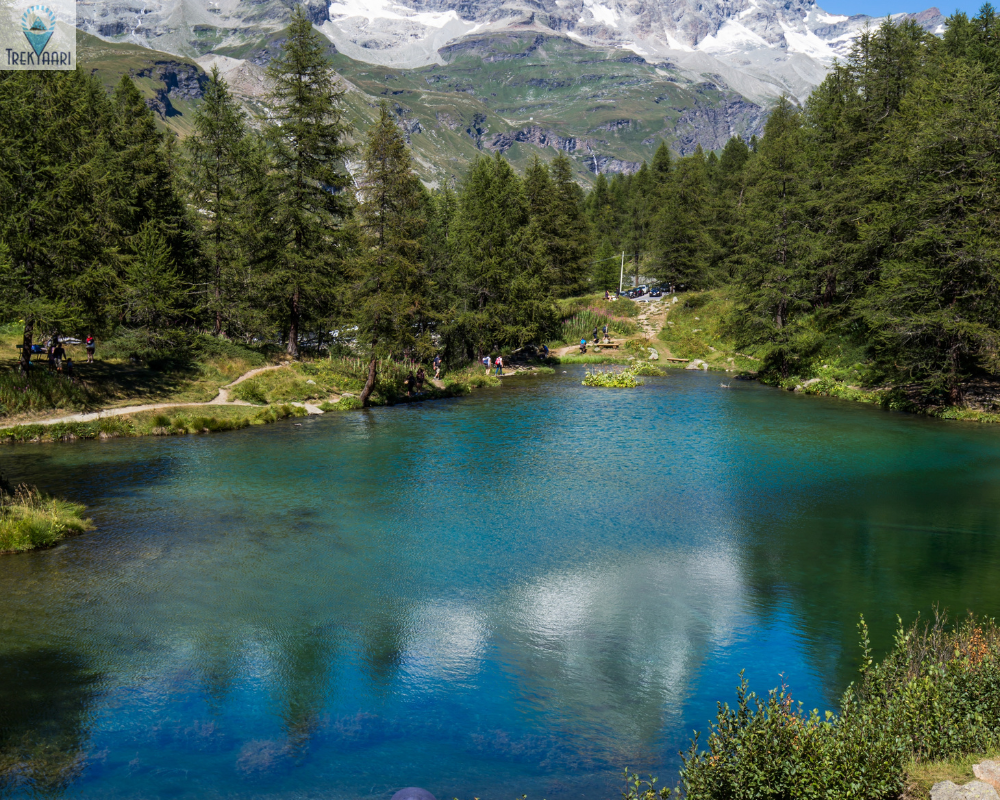How to Plan Your Bhrigu Lake Trek: Tips and Tricks

Bhrigu Lake Trek, nestled high in the Himalayas near Manali, India, is renowned for its pristine beauty and spiritual significance. Located at an altitude of around 4,300 meters (14,100 feet), the lake offers breathtaking views of snow-capped peaks and lush green meadows.
Why Choose Bhrigu Lake Trek?
The Bhrigu Lake trek is favored by adventurers for its relatively moderate difficulty level and stunning landscape. Trekkers are treated to panoramic views, alpine meadows dotted with wildflowers, and a chance to immerse themselves in the natural beauty of the Himalayas.
Preparing for the Trek
Fitness and Health Check
Before embarking on the Bhrigu Lake trek, it’s essential to assess your fitness level. The trek involves moderate to challenging terrain, including steep ascents and descents. Consultation with a doctor is advisable, especially if you have any pre-existing medical conditions or concerns about high-altitude trekking.
Essential Gear and Packing List
Clothing
Layering is crucial for varying weather conditions. Pack lightweight, moisture-wicking clothes that can be easily layered for warmth. A sturdy pair of trekking boots with good ankle support, along with comfortable socks, are essential for navigating the rocky terrain.
Camping Gear
Carry a reliable tent that can withstand mountain weather, along with a warm sleeping bag suitable for sub-zero temperatures. Cooking equipment and utensils should be lightweight yet durable, ensuring you can prepare hot meals at high altitudes.
Understanding the Route
Trekking Map Overview
Familiarize yourself with the trekking route using a detailed map. The Bhrigu Lake trek typically spans over three days, starting from the base camp near Gulaba and culminating at the lake itself.
Day-wise Itinerary
Day 1: Starting Point to Base Camp
Begin your trek from Gulaba, a scenic spot near Manali. The initial hike takes you through dense forests and open meadows, offering glimpses of the surrounding peaks. Reach your base camp and settle in for the night.
Day 2: Acclimatization Day
Use this day to acclimatize to the altitude. Explore the area around the base camp, enjoy short hikes to nearby viewpoints, and engage in light exercises to prepare your body for the ascent to Bhrigu Lake.
Day 3: Summit Day and Return
Rise early to trek to Bhrigu Lake, a steep climb that rewards you with stunning vistas of the Himalayan ranges. Spend time soaking in the tranquility of the lake before beginning your descent back to Gulaba.
Weather and Seasonal Considerations
Best Time to Visit
The best time to undertake the Bhrigu Lake trek is from May to October, when the weather is relatively stable and the trail is free from heavy snowfall. Avoid trekking during the monsoon season (July to August) due to the risk of landslides and unpredictable weather conditions.
Safety Measures on the Trail
Altitude Sickness Awareness
Altitude sickness can affect trekkers at high altitudes. Stay hydrated, ascend gradually, and be aware of symptoms such as headaches, nausea, and dizziness. Carry necessary medications and descend if symptoms worsen.
Emergency Contacts and Communication
Share your trekking itinerary with family or friends and carry a fully charged mobile phone with emergency contacts saved. Local guides and tour operators can provide assistance in case of emergencies.
Enjoying the Natural Beauty
Flora and Fauna
Bhrigu Lake and its surrounding areas are home to a diverse range of flora and fauna. Spot Himalayan flowers like the Brahma Kamal and wildlife such as the Himalayan Monal bird during your trek.
Cultural Insights and Local Interaction
Interact with local communities along the trekking route to learn about their traditions and way of life. Respect local customs and support eco-friendly initiatives to preserve the natural beauty of the region.
Photography Tips and Best Spots
Capturing Sunrise and Sunset
Capture breathtaking sunrise and sunset views from viewpoints near Bhrigu Lake. Use a camera with a good zoom lens to photograph the play of light and shadows on the surrounding peaks.
Recommended Photography Gear
Pack a DSLR or mirrorless camera with extra batteries and memory cards. A tripod will help stabilize your shots in low light conditions, ensuring you capture the essence of the Himalayan landscape.
Environmental Responsibility
Leave No Trace Principles
Follow “Leave No Trace” principles by packing out all waste, including biodegradable items like food scraps. Minimize your impact on the environment by using eco-friendly camping gear and practicing responsible trekking habits.
Waste Management Practices
Dispose of waste responsibly at designated collection points or carry it back to Gulaba for proper disposal. Avoid burning or burying trash, as it can harm local wildlife and pollute the fragile mountain ecosystem.
Post-Trek Recovery and Reflection
Rest and Rejuvenation
After completing the trek, allow yourself time to rest and recuperate. Stretch sore muscles, hydrate well, and reflect on your experiences amidst the serene beauty of Bhrigu Lake.
Sharing Your Experience
Share your Bhrigu Lake trek experience with fellow travelers and outdoor enthusiasts. Write a travelogue, post photos on social media, or contribute to trekking forums to inspire others to explore this hidden gem in the Himalayas.
Conclusion
Planning a Bhrigu Lake trek requires careful preparation and an appreciation for the natural wonders of the Himalayas. By following these tips and tricks, you can ensure a safe and memorable adventure amidst breathtaking landscapes and cultural richness.










